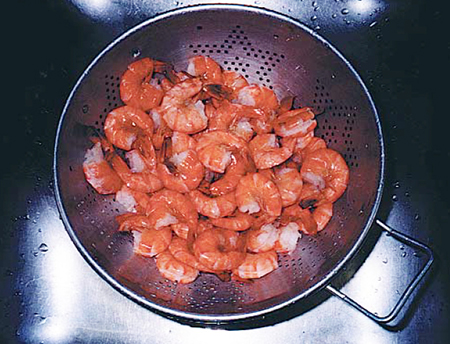Live longer, be healthier, avoid depression

The American Heart Association recently introduced its new dietary guidelines, which now recommend that people eat seafood twice a week to obtain omega-3 fatty acids found in high-fat fish like salmon and tuna, as well as other seafood species. These guidelines have been expanded to include specific recommendations tailored to risks associated with heart disease and strokes.
New AHA guidelines
The guidelines were recently published in “Circulation: Journal of the American Heart Association.” Ronald M. Krauss, M.D., its principal author and a senior scientist at the Lawrence Berkeley National Laboratory at the University of California, stated in a press release that the main goals of the new guidelines are to help Americans achieve an overall healthy eating pattern. The guidelines will also help individuals achieve and maintain an appropriate body weight, a desirable cholesterol profile, and a desirable blood pressure level.
Eat more fish
The guidelines continue to advocate a population-wide limitation of dietary saturated fat (less than 10 percent of energy) and cholesterol (less than 300 milligrams per day), and specific intakes for individuals based on cholesterol and lipoprotein levels and the presence of existing heart disease, diabetes, and other risk factors. Because of increased evidence for the cardiovascular benefits of fish (particularly fatty fish), consumption of at least two fish servings per week is now recommended.
A diet rich in fish, fruits, legumes (beans), whole grains, vegetables, low-fat dairy products, and lean meats and poultry is still recommended. The AHA recommends eating five servings of fruits and vegetables, and six servings of grains daily. But for the first time, two weekly servings (3 oz. each) of fatty fish like tuna or salmon are being recommended. Canned products of these species are also acceptable.
Many benefits
Since the previous publication of these guidelines by the AHA, the overall approach has been modified to emphasize their relation to specific goals the AHA considers of greatest importance for lowering the risk of heart disease and stroke. The revised guidelines put greater emphasis on foods and an overall eating pattern, and the need for all Americans to achieve and maintain a healthy body weight.
“Americans are eating too many calories, and are not getting much nutritional value from those calories,” Krauss said. “Although the guidelines were developed to reduce or delay heart disease and stroke, Americans who follow them could reap many other benefits. Research indicates these nutritional steps could also decrease the risk of developing cancer or osteoporosis.”
Omega-3 fatty acids and depression

People who eat fish more than twice a week are less likely to suffer from bouts of depression, according to the results of a Finnish investigation carried out by psychiatrist Antti Tanskanen from the University of Kuopio. People who eat fish less than once a week have a 31 percent higher chance of suffering from depression.
A lack of the fatty acid omega-3 probably makes all the difference, said the Finnish psychiatrist. Last year, omega-3 was reported to help in the treatment of manic depression. One of Tanskanen’s colleagues has demonstrated that inhabitants of a country with a high consumption of fish have fewer cases of serious depression.
(Editor’s Note: This article was originally published in the December 2000 print edition of the Global Aquaculture Advocate.)
Now that you've finished reading the article ...
… we hope you’ll consider supporting our mission to document the evolution of the global aquaculture industry and share our vast network of contributors’ expansive knowledge every week.
By becoming a Global Seafood Alliance member, you’re ensuring that all of the pre-competitive work we do through member benefits, resources and events can continue. Individual membership costs just $50 a year. GSA individual and corporate members receive complimentary access to a series of GOAL virtual events beginning in April. Join now.
Not a GSA member? Join us.
Author
Tagged With
Related Posts

Intelligence
Facts about shrimp and cholesterol
Many people, including health-conscious consumers, are concerned about the cholesterol content of foods such as meat, eggs and dairy products. In the case of shrimp, the cholesterol story is different because a number of research studies have demonstrated that the high percentage of “good fats” in shrimp reduce the impact of cholesterol, and that a majority of people can eat shrimp as part of a balanced diet.

Intelligence
Behold the nutritious oyster
Oysters provide important, natural filtration of water and are an important component of many healthy coastal ecosystems because their active filtering can help improve and maintain water quality. For many coastal communities, oysters are an important food resource and excellent sources of protein and amino acids, zinc, selenium, iron and B-vitamins.

Intelligence
As ocean temperatures rise, so too will vibrio outbreaks
A study using a half-century of data has linked climate change and warming sea temperatures with an increase in illnesses from the common vibrio bacteria. Shellfish growers, fighting a particularly virulent strain of Vibrio parahaemolyticus, are changing their harvest protocols.

Intelligence
Despite Seafood Watch downgrade, few market changes for geoducks
A rating change for Pacific geoducks farmed in Washington state and British Columbia surprised and confused many in the field, since it’s a segment of the industry generally considered sensitive to sustainability issues.


